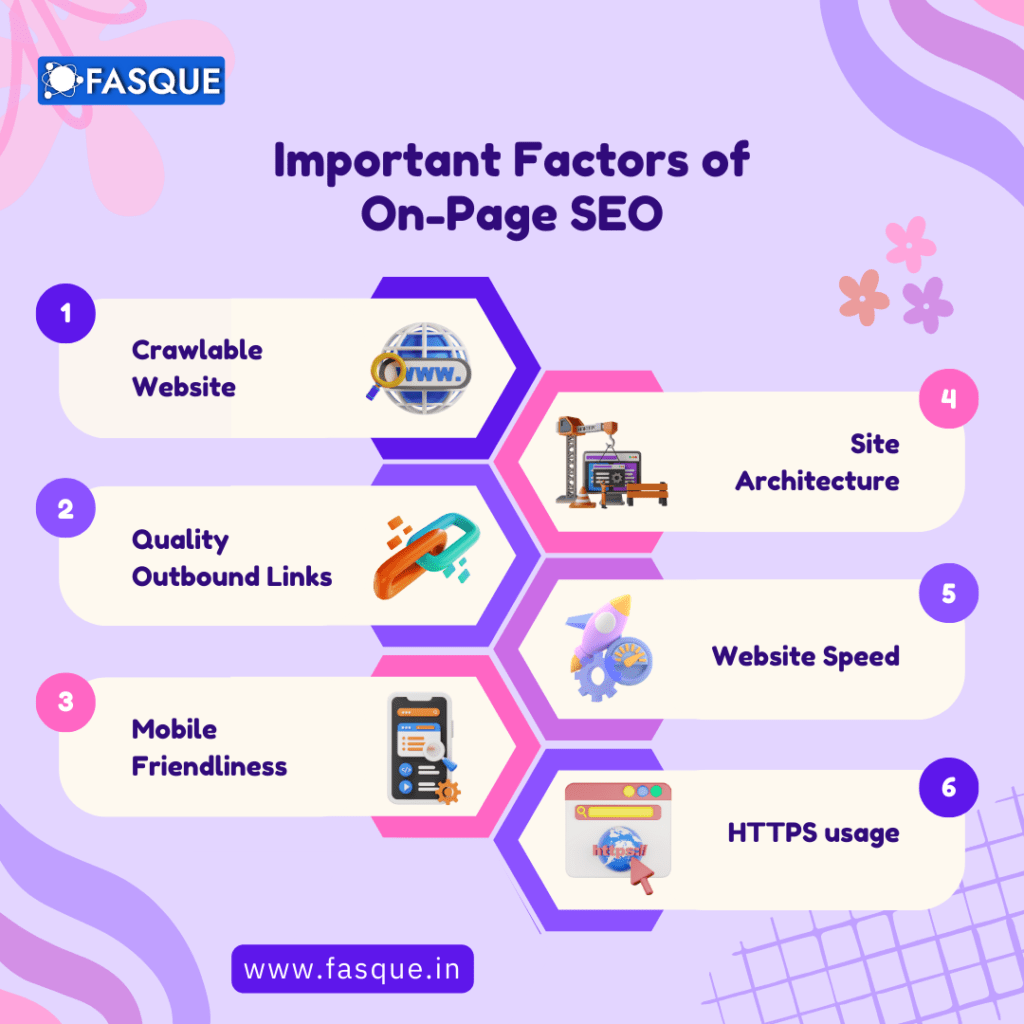- Keyword Research: Identify relevant keywords and phrases that people use to search for your products or services. Use tools like Google Keyword Planner, SEMrush, or Moz Keyword Explorer to discover keywords with high search volume and low competition.
- On-Page Optimization: Optimize your web pages by incorporating target keywords in the title tag, meta description, headings, and body content. Ensure your content is well-structured, easily readable, and provides value to users.
- Quality Content: Create high-quality, engaging, and unique content that satisfies the search intent of users. Focus on creating comprehensive, informative, and authoritative content that is valuable to your target audience.
- Mobile-Friendly Design: With the increasing use of mobile devices, it’s crucial to have a website that is mobile-responsive and provides a seamless user experience across different screen sizes.
- Page Speed: Improve your website’s loading time to enhance user experience and search engine rankings. Compress images, minify code, enable browser caching, and use Content Delivery Networks (CDNs) to boost page speed.
- Link Building: Earn high-quality backlinks from authoritative and relevant websites. Focus on natural link building through guest blogging, content promotion, influencer outreach, and social media marketing.
- User Experience: Provide a user-friendly website with easy navigation, clear calls to action, and intuitive design. Make sure your site is easy to use, visually appealing, and optimized for conversions.
- Technical SEO: Ensure your website is free from technical issues that can hinder search engine crawling and indexing. Check for broken links, optimize XML sitemaps, improve URL structure, and implement structured data markup.
- Social Media Integration: Utilize social media platforms to promote your content and engage with your audience. Encourage social sharing and build a strong social media presence to increase visibility and drive traffic.
- Monitoring and Analysis: Regularly monitor your website’s performance using tools like Google Analytics and Google Search Console. Analyze data, identify trends, and make data-driven decisions to optimize your SEO strategies.
Remember that SEO is an ongoing process, and it’s important to stay updated with the latest trends and algorithm changes to adapt your strategies accordingly.

